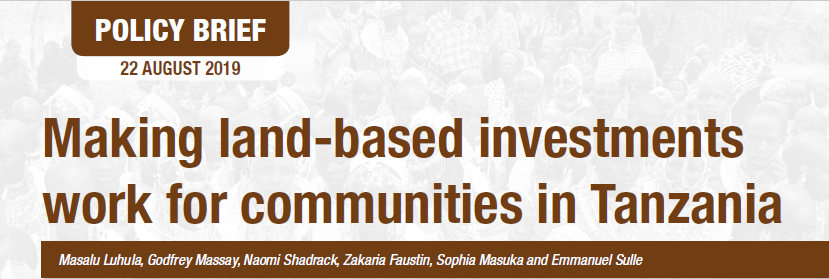PARTICIPATORY SCENARIO PLANNING (PSP) WORKSHOP FOR IRINGA DISTRICT
12TH – 13TH NOVEMBER 2018
Tanzania Natural Resource Forum (TNRF), HAKIARDHI and PAICODEO are implementing a four years “Ardhi Yetu Project II” (AYP II) funded by CARE Denmark through Care Tanzania. On part of TNRF, the project is implemented in four districts; Kiteto, Simanjiro, Chemba and Iringa rural. The project aims at facilitating effective climate vulnerability and capacity analysis for sustainable adaptation and resilience by targeted community organizations or groups such as Land Right Monitors (LRMs), Loose Coalitions, Women networks, Community-Based Organizations (CBOs) and Local Authorities.
Thus, TNRF in collaboration with CARE through Alizeti Usawa na Thamani (ALUTA) and Kukua ni Kujifunza (KNK) is expecting to PSP); a mechanism for collective sharing and interpretation of climate forecasts in Iringa following the seasonal weather forecast for the Southern Meteorological zone covering Southern highlands regions. The current PSP will be implemented in Iringa rural district on the October, November, December, January, February and March weather forecasts released by Tanzania Meteorological Agency (TMA) and will cover; Itunundu, Isele, Kimande, Magombwe and Mbolimboli villages.
The workshop will create space for sharing climate information from both local and scientific knowledge, discussing and appreciating the value of the two sources and finding ways to interpret the information into a form that is locally relevant and useful. This is achieved by participants considering climatic probabilities (which are an expression of the uncertainty in the climate forecast), assessing their likely hazards, risks, opportunities and impacts, and developing scenarios based on the assessment.
The workshop will focus on;
- Facilitating access to and shared interpretation of climate forecasts to generate information which can be understood and used, taking risk and uncertainty into account.
- Assisting communities and local governments to agree on options, make decisions, develop and plan for climate-resilient livelihoods (by knowing forecasts and probabilities so as to spread and manage climatic risk)
- Promoting the integration of climate-resilient livelihoods and disaster risk management into local government planning processes.
- Creating a common platform for climate communication which respects, reviews and combines knowledge from communities and different groups within them, meteorological services and service providers.
- Linking government and community actors to enable response and support to community action plans and empower communities through improved contacts and relations.
The process will bring together meteorologists, community members, Local Government departments and Local NGOs to share their knowledge on climate forecasts.
It is expected that participants will come up with plans for three different scenarios of (normal rains, above normal rains and below normal rains) including uncertainties/hazards and impacts associated with those scenarios and a set of advisories as well as work plan for its implementation.

